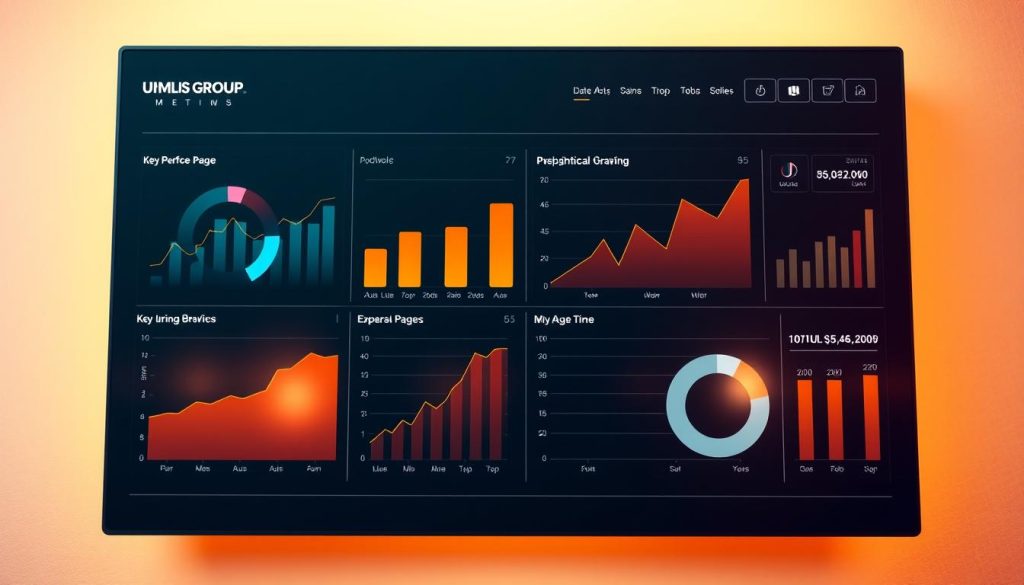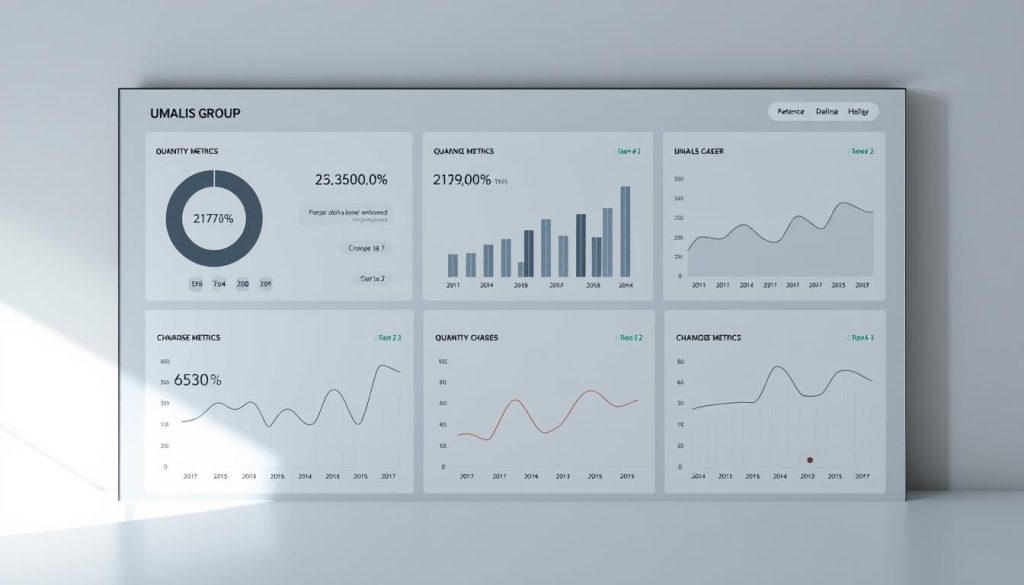In today’s competitive business environment, professionals seeking career growth need to demonstrate their value through tangible achievements. Understanding and leveraging key performance indicators can significantly boost your career trajectory.
By tracking the right metrics, you can quantify your contributions, making your achievements more visible during performance reviews and salary negotiations. This data-driven approach not only enhances your professional development but also gives you a competitive edge in the job market.
As businesses continue to rely on data to make informed decisions, professionals who can effectively measure and communicate their performance will be better positioned for success. By implementing the right metrics, you can drive your career forward and achieve your professional goals.
Table of Contents
Key Takeaways
- Identify the most relevant performance metrics for your career growth.
- Understand how to track and measure your professional achievements.
- Learn how to effectively communicate your value to employers and clients.
- Discover how to leverage data to drive your career forward.
- Gain a competitive edge in the job market by using key performance indicators.
Understanding the Power of Performance Metrics in Career Development
In today’s competitive business landscape, understanding performance metrics is crucial for career advancement. These metrics are quantifiable measurements used to evaluate the effectiveness, efficiency, and success of various business activities, processes, and individual contributions.
What Are Performance Metrics and Why They Matter
Performance metrics matter because they transform subjective assessments into objective data points that can be tracked, analyzed, and communicated clearly to stakeholders. For career advancement, these metrics serve as concrete evidence of your professional value, helping you build a compelling narrative about your contributions. Effective performance metrics should be relevant to your role, measurable over time, achievable with reasonable effort, aligned with organizational goals, and time-bound to create accountability.
The Difference Between Performance Metrics and KPIs
While key performance indicators (KPIs) focus on specific strategic objectives, performance metrics provide a broader view of operational effectiveness across multiple dimensions. Understanding the distinction between these two concepts helps professionals select the most appropriate measurements for their specific career goals and responsibilities. By mastering the fundamentals of metrics, you position yourself as a data-driven professional who understands how to demonstrate value in quantifiable terms.
To further illustrate the difference, consider that KPIs are like navigation checkpoints, whereas performance metrics are like the dashboard instruments that monitor the overall health and performance of your vehicle. Both are essential for a successful journey, but they serve different purposes.
How Performance Metrics Drive Professional Growth

Performance metrics play a pivotal role in professional development, enabling employees to gauge their progress and align with organizational objectives. By leveraging these metrics, professionals can gain valuable insights into their work, identify areas for improvement, and drive their career forward.
Creating Visibility for Your Contributions
One of the primary ways performance metrics drive professional growth is by creating visibility for your contributions. When you quantify your achievements through metrics, they become more compelling and harder to overlook during performance evaluations and promotion considerations.
- Transforming intangible work into measurable outcomes that can be easily communicated to managers and stakeholders.
- Quantifying achievements to make them more noticeable during evaluations.
- Aligning individual efforts with broader organizational objectives.
Establishing Objective Measures of Success
Performance metrics also help establish objective measures of success, eliminating subjective bias in performance assessment. This ensures that your contributions are evaluated fairly and based on concrete data.
- Eliminating subjective bias in performance evaluations.
- Demonstrating consistent improvement and growth over time.
- Creating a roadmap for professional development and identifying areas for improvement.
By effectively utilizing performance metrics, professionals can take ownership of their career trajectory, guided by concrete data points. This proactive approach enables employees to drive their professional growth and achieve their work goals.
Essential Quality-Based Performance Metrics to Track
To enhance your career, it’s crucial to track essential quality-basedperformance metrics. These metrics not only measure the excellence and effectiveness of your work but also provide a holistic view of your professional contributions.
Management by Objectives (MBO)
Management by Objectives (MBO) is a strategic management model that aims to improve an organization’s performance by defining specific objectives for employees. By establishing clear, measurable goals aligned with organizational objectives, MBO provides a framework for evaluating employee performance based on the achievement of these predetermined targets.
For instance, if a company aims to increase sales, an MBO for a sales employee might include specific targets, such as closing a certain number of deals within a quarter. This approach ensures that individual efforts contribute directly to the organization’s overall goals.
360-Degree and 180-Degree Feedback
The 360-degree feedback system is a comprehensive tool used to measure employee performance by collecting evaluations from multiple sources, including supervisors, peers, subordinates, and even clients. This multi-dimensional feedback provides a well-rounded view of an employee’s effectiveness and areas for improvement.
A variant of this is the 180-degree feedback, which gathers feedback from a fewer number of sources, typically supervisors and peers or subordinates. Both methods help in understanding how different stakeholders perceive an employee’s performance.
Customer Satisfaction Score (CSAT)
Customer Satisfaction Score (CSAT) is a metric used to evaluate an employee’s performance by measuring the satisfaction levels of customers they interact with. It’s particularly relevant for professionals in customer-facing roles, as it directly links their performance to client experience and satisfaction.
CSAT is usually measured through surveys or feedback forms that ask customers to rate their experience. High CSAT scores indicate that employees are effectively meeting customer needs, contributing to overall customer loyalty and retention.
Net Promoter Score (NPS)
Net Promoter Score (NPS) is another indicator of employee performance, particularly in roles that involve customer interaction. NPS measures the likelihood that customers would recommend a company’s services or products to others, serving as a proxy for the quality of customer interactions.
By tracking NPS, professionals can understand how their efforts impact customer loyalty and overall company reputation. A high NPS suggests that employees are not only meeting but exceeding customer expectations.
| Metric | Description | Benefit |
|---|---|---|
| MBO | Aligns individual goals with organizational objectives | Enhances goal achievement |
| 360-Degree Feedback | Provides comprehensive performance insights | Improves multi-dimensional understanding of performance |
| CSAT | Measures customer satisfaction | Enhances customer loyalty and retention |
| NPS | Indicates customer loyalty | Improves customer interaction quality |
By focusing on these quality-based performance metrics, professionals can demonstrate their commitment to excellence, differentiate themselves from colleagues who focus solely on quantitative achievements, and make targeted improvements that enhance their professional reputation.
Quantity-Based Performance Metrics for Career Advancement

Professionals seeking career advancement can greatly benefit from focusing on quantity-based performance metrics. These metrics provide tangible evidence of productivity and output, serving as clear indicators of one’s ability to deliver results consistently. By tracking and analyzing these metrics, professionals can demonstrate their value to their organizations and position themselves for future growth.
Task Completion Rate
The task completion rate is a crucial metric that measures the percentage of tasks successfully completed within a given timeframe relative to the total number of assigned tasks. This metric demonstrates efficiency in handling assigned responsibilities, showcasing reliability and time management skills to supervisors and potential employers. A high task completion rate indicates that an individual is capable of managing their workload effectively.
Number of Sales or Client Contacts
For sales professionals, tracking metrics like the number of sales closed, client contacts made, and leads generated provides concrete evidence of their contribution to company revenue. These metrics are essential in demonstrating a sales professional’s ability to drive revenue and grow the customer base. By focusing on these metrics, sales professionals can showcase their effectiveness and value to their organizations.
Units Produced or Projects Completed
Project-based professionals benefit from tracking the number of projects completed, milestones achieved, and deliverables produced as quantifiable measures of their productivity. These metrics provide a clear indication of a professional’s ability to manage and complete projects, demonstrating their capabilities to current and potential employers. By highlighting these achievements, professionals can strengthen their career prospects.
Lead Generation and Conversion Metrics
Lead generation and conversion metrics are vital for professionals involved in sales and marketing. These metrics measure how well a company turns interest into sales, looking at the lead conversion rate and market reach. By analyzing these metrics, professionals can demonstrate their ability to attract potential clients and guide them through the sales funnel to become customers, thereby contributing to the company’s revenue growth.
By leveraging these quantity-based performance metrics, professionals can present clear, numerical evidence of their contributions during performance reviews, making a strong case for career advancement opportunities such as promotions or salary increases.
Efficiency and Productivity Metrics That Showcase Your Value
In today’s fast-paced business environment, leveraging efficiency and productivity metrics can significantly enhance your career prospects. These metrics not only demonstrate your ability to maximize output while minimizing resource consumption but also position you as a valuable asset to your organization.
Work Efficiency Ratios
Work efficiency ratios are a crucial metric for evaluating how effectively you utilize resources such as time, money, or effort to achieve a certain level of output while maintaining quality. By tracking your work efficiency ratio, you can identify areas for improvement and optimize your workflow to eliminate waste. This metric is particularly valuable for remote workers and independent professionals who need to demonstrate their productivity without direct supervision.
- Measure how effectively you utilize resources like time and effort to produce results.
- Highlight your ability to optimize processes and eliminate waste.
- Track your personal productivity metrics over time to identify patterns in your work habits.
Revenue or Profit Per Employee
Revenue per employee is another significant metric that directly connects your contributions to the company’s financial performance. It is calculated by dividing the total revenue of the organization by the number of employees. This metric provides a powerful argument for your value during salary negotiations and performance reviews. For managers, team productivity metrics can showcase leadership abilities and the capacity to drive results through effective team coordination.
- Directly connect your contributions to the company’s financial performance.
- Provide a powerful argument for your value during salary negotiations.
- Showcase leadership abilities and team coordination for managers.
By focusing on efficiency and productivity metrics, you can demonstrate your value to your organization and enhance your career prospects. These metrics not only highlight your ability to maximize output while minimizing resource consumption but also provide a clear indication of your professional worth.
Implementing Performance Metrics in Your Professional Life
Implementing performance metrics in your professional life is a strategic move that can significantly enhance your career trajectory. By doing so, you can gain a clearer understanding of your strengths and areas for improvement, ultimately driving your professional growth.
Setting Up Personal Performance Dashboards
Creating a personal performance dashboard is a crucial step in tracking your performance metrics. This involves identifying the most relevant metrics for your role and career objectives. Digital tools such as spreadsheets, project management software, or specialized performance tracking applications can streamline the process of collecting and analyzing your performance data. By visualizing your metrics in one place, you can easily track progress and identify trends over time.
To set up an effective dashboard, start by aligning your metrics with organizational goals. Balance quantitative and qualitative metrics to get a comprehensive view of your performance. Customize these metrics according to your role, and ensure they are measurable and transparent.
Regular Self-Assessment and Adjustment
Regular self-assessment against your established performance metrics is vital. This process helps you identify strengths to leverage and areas for improvement before formal performance reviews. The most effective implementation strategies involve setting baseline measurements, establishing realistic targets, and scheduling regular check-ins to assess progress.
As your role evolves and your career progresses, it’s essential to adjust your metrics to ensure they remain relevant. Sharing your performance metrics approach with your manager demonstrates your commitment to professional growth and can lead to more productive work discussions.
By implementing these strategies and regularly reviewing your performance metrics, you can optimize your professional processes and drive career advancement.
Leveraging Performance Metrics in Performance Reviews and Negotiations
The strategic use of performance metrics can transform performance reviews and negotiations, making them more objective and outcome-driven. By keeping an eye on these metrics constantly, you can identify areas of strength and improvement, such as in sales or project management, and make informed decisions for better growth and smarter strategies.
Presenting Your Metrics-Based Achievements
When presenting your achievements, it’s crucial to connect your individual performance metrics to department or organizational goals. This demonstrates your strategic value and helps guide the conversation toward your most impressive accomplishments during reviews. Preparing a concise summary of your key employee performance metrics before reviews is essential. For example, metrics such as task completion rate, customer satisfaction score, or revenue per employee can be compelling indicators of your contributions.
Using Data to Support Promotion and Raise Requests
Using data to support promotion and raise requests transforms subjective conversations into objective discussions about your demonstrated value to the organization. Performance metrics that show improvement over time create a compelling narrative of growth and development. Comparative metrics that position your performance relative to team averages or industry benchmarks can be particularly persuasive during negotiations. For instance, highlighting how your sales figures have grown compared to the team average can strengthen your case for a raise.
Conclusion: Transforming Your Career Through Strategic Metric Tracking
By incorporating performance metrics into your professional development strategy, you can achieve sustainable career success. This approach not only enhances your visibility within the organization but also provides a clear roadmap for continuous improvement. Strategic performance metric tracking allows you to demonstrate your value through objective evidence, making it a powerful tool in career advancement.
By implementing various types of performance metrics—such as quality-based, quantity-based, and efficiency metrics—you create a comprehensive picture of your professional contributions. This balanced approach ensures that you are not only meeting your current responsibilities but also aligning with your long-term career aspirations.
Regular review and refinement of your performance metrics are crucial to ensure they remain relevant as you take on new challenges and responsibilities. This practice not only aids in communicating your value during reviews and negotiations but also guides your professional development efforts by highlighting areas for growth.
As organizations increasingly rely on data-driven decision-making, professionals who can demonstrate their impact through metrics gain a significant advantage. By embracing performance metrics as tools for career enhancement, you position yourself for sustainable career success.
FAQ
What are the most effective performance metrics for career advancement?
The most effective metrics for career advancement include task completion rate, customer satisfaction score, and revenue per employee, as they provide a comprehensive view of your contributions and value to the organization.
How do I choose the right key metrics for my profession?
To choose the right metrics, consider your job requirements, industry standards, and the goals of your organization, and select metrics that align with these factors, such as sales performance or project completion rate.
Can employee performance metrics be used for personal growth?
Yes, employee metrics can be used for personal growth by identifying areas for improvement, setting realistic goals, and tracking progress, enabling you to enhance your skills and productivity.
How often should I review and adjust my performance tracking?
Regular self-assessment and adjustment of your tracking are crucial, and it is recommended to review your metrics regularly, such as quarterly or bi-annually, to ensure you are on track to meet your goals.
How can I effectively present my metric-based achievements during a performance review?
To effectively present your achievements, prepare a clear and concise presentation of your metrics, highlighting your accomplishments and the value you have added to the organization, and be prepared to discuss your strategies and future goals.
What role do customer satisfaction scores play in career development?
Customer satisfaction scores play a significant role in career development, as they indicate your ability to meet customer needs and deliver quality work, which can lead to increased trust, loyalty, and opportunities for growth.
How can I leverage data-driven insights to support my career goals?
By using data-driven insights, you can demonstrate your achievements, identify areas for improvement, and make informed decisions about your career, enabling you to stay ahead in your profession and achieve your goals.





